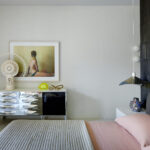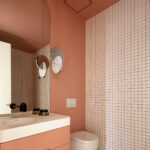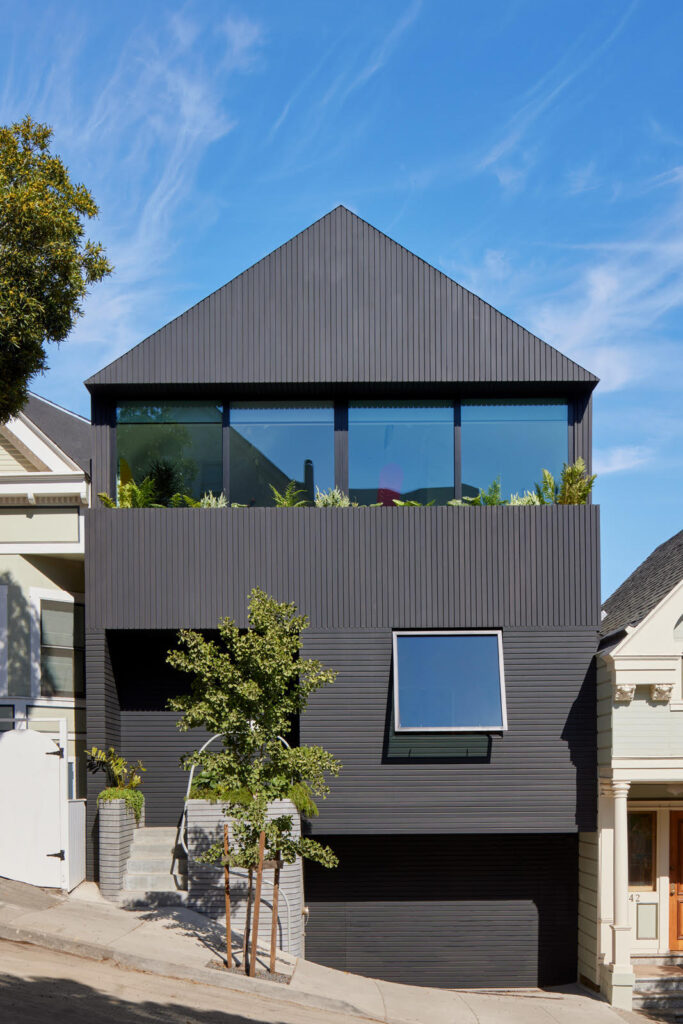An Acquired Taste
Author:Anh-Minh LeFor a San Francisco interior designer, home is also an artful showcase
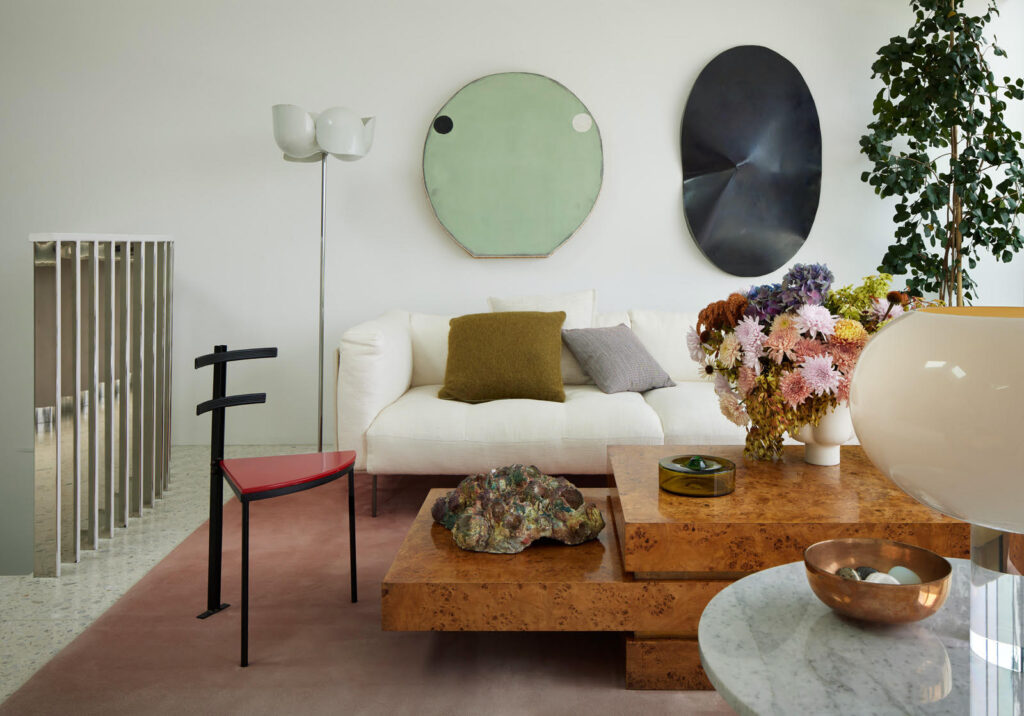
On their third or fourth date, Alison and Bruce Damonte had plans to go to a concert. But first, they had to make an important stop—to meet with a Craigslist seller about a Mid-century modern Ellipse rocking chair, designed by Renato Zevi. “My husband and I have always been collectors,” says Alison. “This is a history that we have together—finding unusual things.”
Sixteen years later the couple is still collecting furniture, art and accessories—which now fill their 2,400-square-foot house in San Francisco’s Bernal Heights neighborhood. And that vintage chrome-framed rocking chair? It currently resides in the office of Alison’s eponymous interior design firm. (Bruce, an architectural photographer, captured their home for this story.)
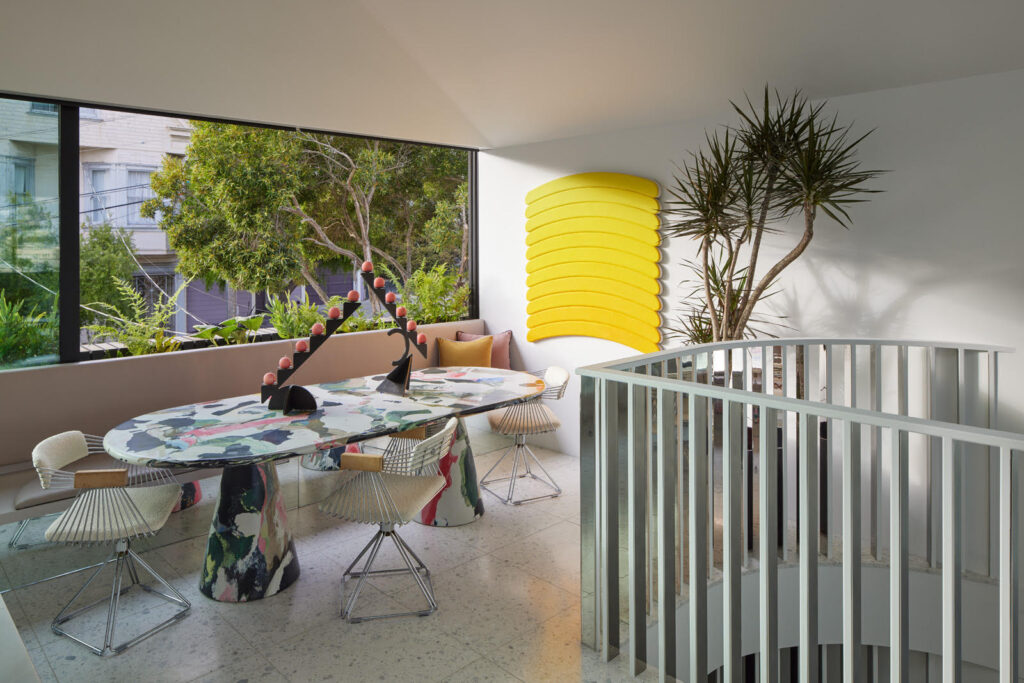
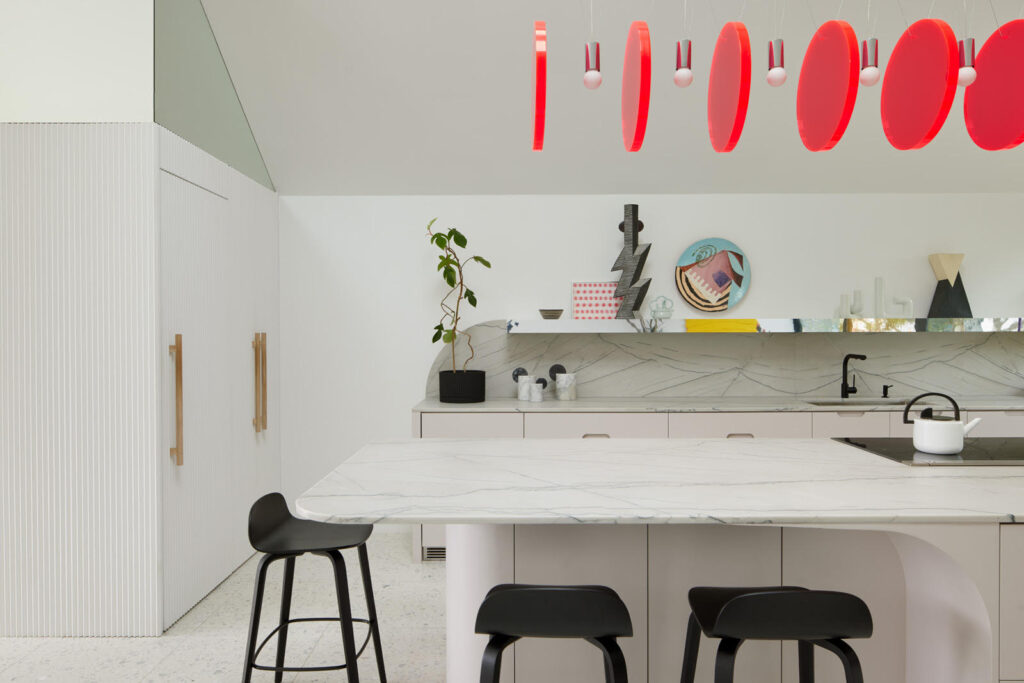
In 2010, they purchased their 1908 Edwardian, intending to update the bathrooms and kitchen. (A series of prior remodels had stripped the house of any period charm.) Gradually, though, the scope of the project expanded. “We wanted to make it the best place for us to live in,” says Alison. “And the longer we waited, the more money we were able to save up.”
Seven years on, working with Mork-Ulnes Architects, they finally submitted their renovation plans to the city. Then on Christmas Eve of 2017, they awoke to what Alison describes as a nightmare: The house was on fire. The structure was red-tagged and, once again, the Damontes’ plans changed. “We call the house ‘the silver lining house,’” says Alison. “The fire was really terrible, but so many good things came out of it for us.” Another reason for the nickname: Reflective surfaces abound, like the sculptural staircase designed by Mork-Ulnes, with slats made of rectangular tubing that are painted on three sides and mirrored on one. Plus, Alison notes, “I do love chrome, the ’70s and silver.”
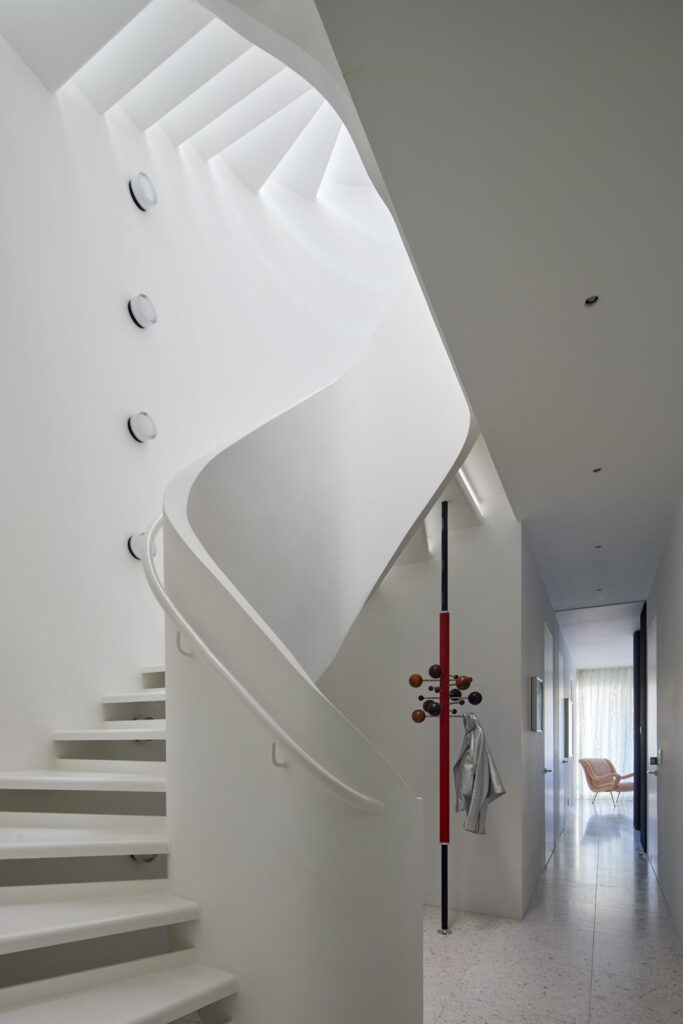
Ultimately, a garage was carved out below the entry level, formerly a basement that was occupied by possums at some point, and an upper floor was added to the house, which is flanked by two-story abodes. Also, in keeping with their neighbors, the previously flat roof was modified to a gabled style. “We wanted to be mindful of the vernacular that was already there,” Alison explains.
From the street, the house is remarkable, however, for its stained-black cedar siding, positioned both vertically and horizontally. The contractor, Rico’s General Construction, continued the horizontal lines onto the concrete front steps and planter, which ingeniously conceals the trash bin storage. But anyone familiar with Alison’s audacious work—for one client, she conceived a rainbow staircase with each tread and riser a different color—knows that the bold exterior paint choice is just a hint of what awaits inside.
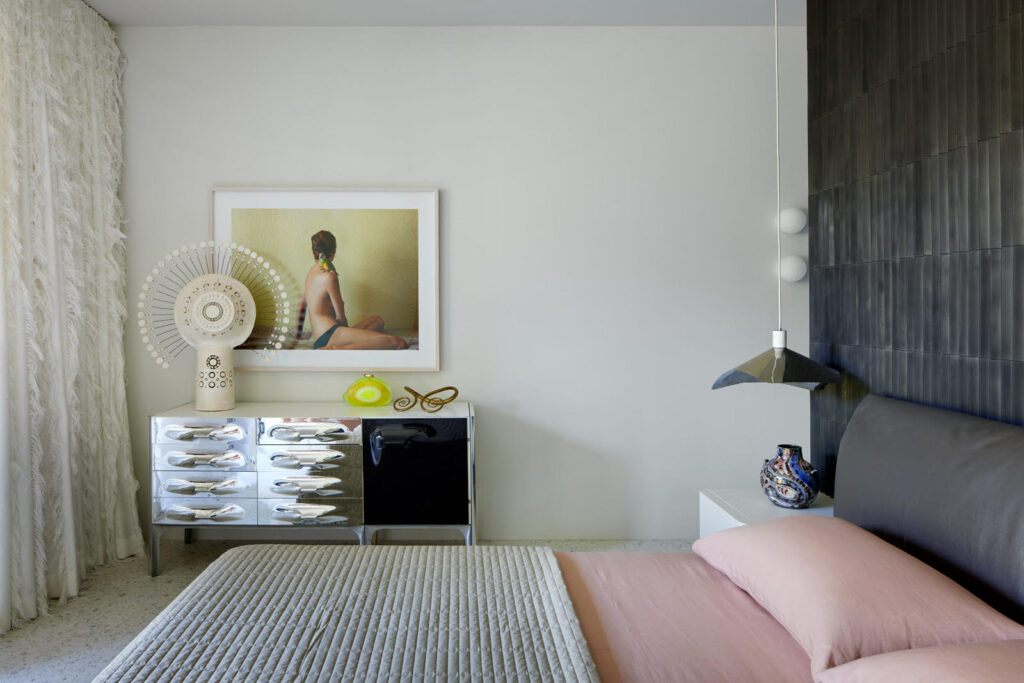
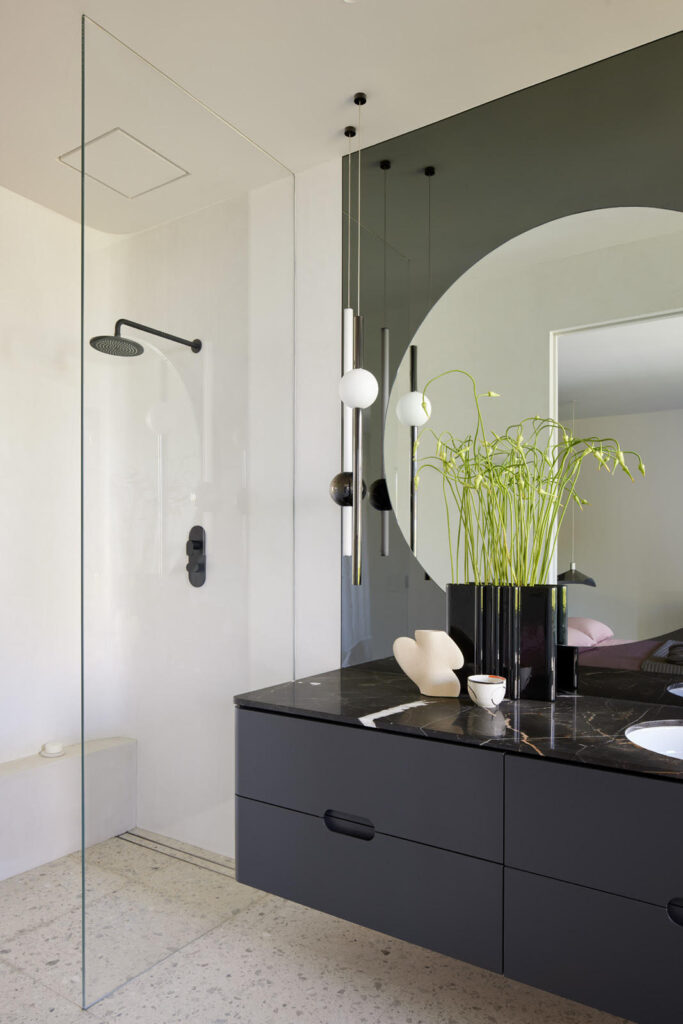
On the entry level, along with guest quarters and Bruce’s office, is the “ladies’ lounge,” as Alison refers to it, painted a rosy hue, and the library, done in gray. In the former, with the press of a button labeled “disco” on the wall, a custom black-mirrored sphere by Yolanda Baker spins. (Baker has also made disco balls for Beyoncé and Madonna.) The library is anchored by a pair of vintage Camaleonda sofas by Mario Bellini for B&B Italia that were procured at auction. According to Alison, they came from an inn in San Francisco’s Castro district; she replaced the brown velour upholstery with a saffron Manuel Canovas cotton velvet. The bar, tucked in a corner of the room, is painted a glossy bordeaux. It was initially a pale pink, but “that didn’t give the bar any va-va-voom,” says Alison, “so it was repainted.”
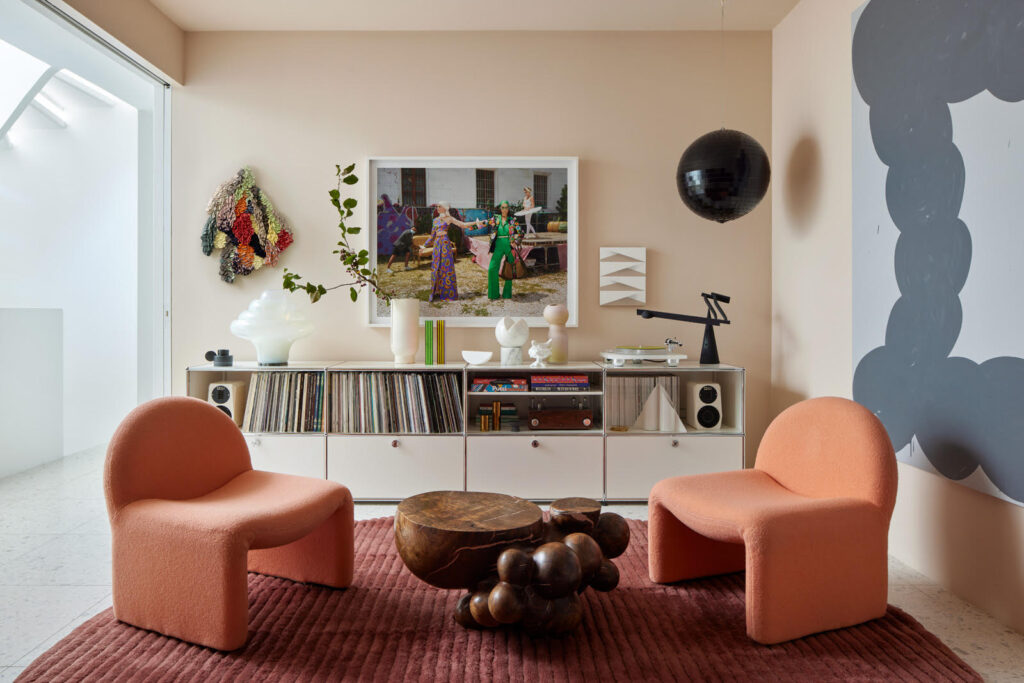
With all-white walls in the open living, dining and kitchen area, the top floor has a gallery-like vibe. But sitting on the Rudi Verelst dining chairs, which surround a commissioned Dirk van der Kooij table composed of recycled plastic in an array of colors, is highly encouraged by the homeowners (“Nothing is precious,” says Alison). Ditto for the distinctive chair with a red wedge-shaped seat and the Piero Lissoni-designed sofa in the living room, which also includes a 1970s vintage burlwood coffee table by Jean Claude Mahey from a market in Morocco. “We went to buy some rugs, which is what you do when you go to Marrakech,” recounts Alison. The rug dealer introduced them to a French furniture dealer, leading to the table’s acquisition.
In the kitchen, a custom design by Johanna Grawunder, which consists of a single pendant with multiple lights suspended between neon pink acrylic discs, takes pride of place. “The light fixture and the dining table go beyond furniture,” says Alison. “They are art—functional things that artists made.” Nearby, a volume with tambour paneling contains a powder room covered in a Nobilis wallpaper with a grid pattern. The motif also appears in a bathroom that has two-inch-square tiles with grout color-matched to the peach walls.
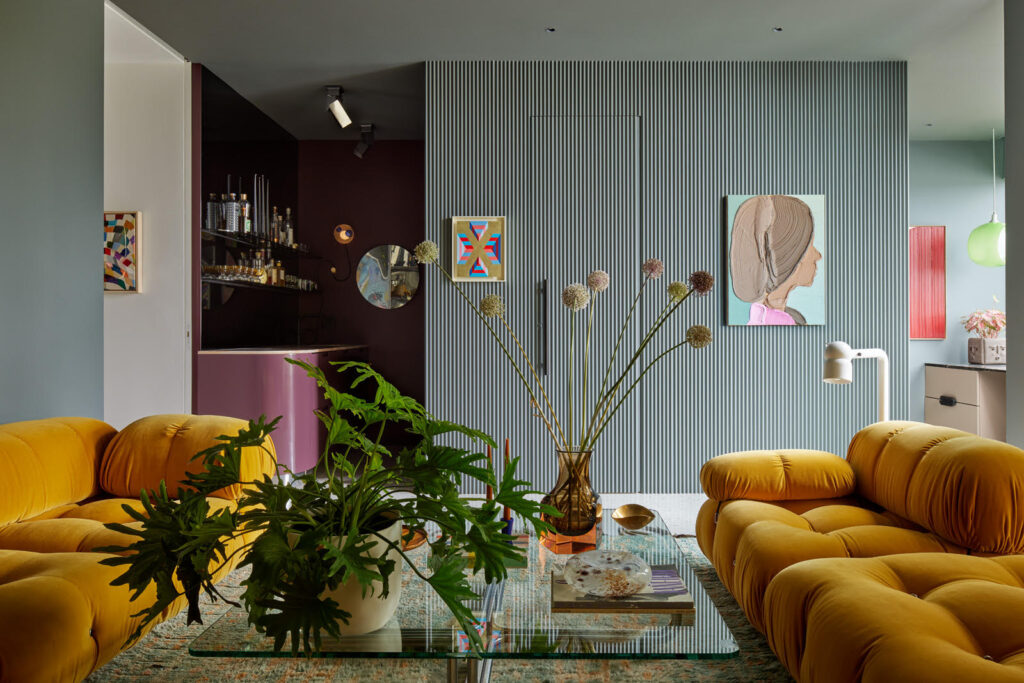
Among the other recurring elements in the house are curves—from the planter outside to the staircase to the shape of mirrors and cabinetry—and the tambour detail on surfaces. The latter is found on a library wall and the headboard wall of the Damontes’ bedroom, where Tina Frey specially fabricated translucent resin tiles, in charcoal, for her friends.
In addition to a one-car garage and laundry room, the primary suite—noticeably devoid of vibrant colors—is on the lower level and offers access to the garden. “A lot of times the first thing that people associate with me is color, but this bathroom and bedroom are my favorite rooms in the house,” says Alison. “I wanted the focus to be the garden and to make the materials shine a little more in these two rooms and have it be a really quiet experience.” Case in point: The drapes are made of a fringed fabric by Maria Cornejo for Knoll that “is whimsical and has a beautiful texture, but it’s white so it’s not too crazy.”
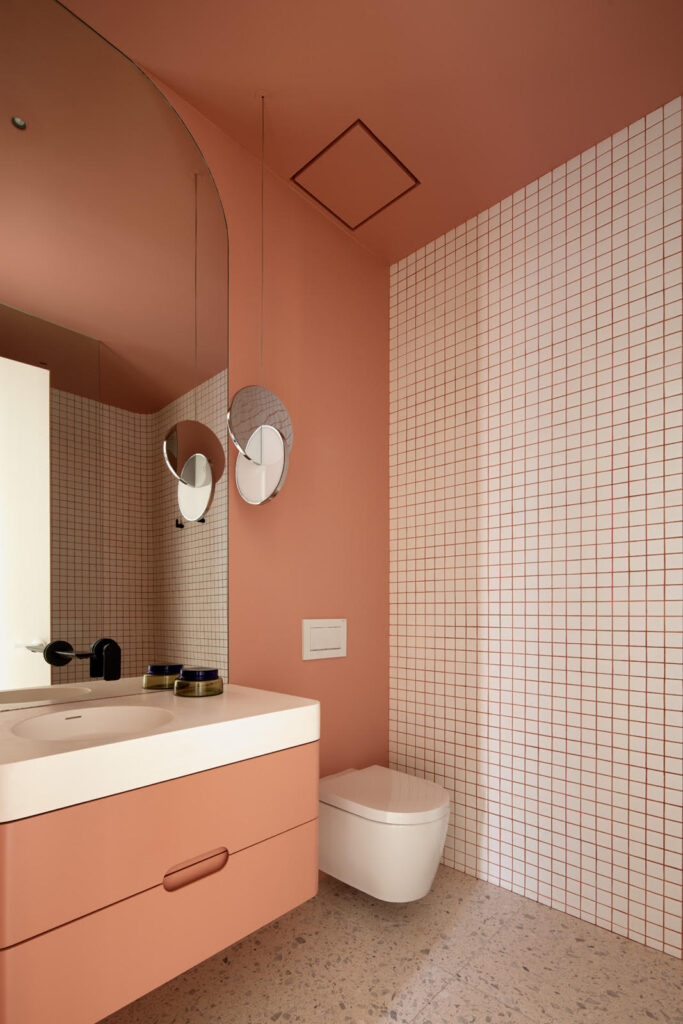
No surprise, the house is Alison’s most personal undertaking—one she freely admits “is not for everyone. I realize this aesthetic is not for everybody.” Even so, her singular and soulful approach has made Alison Damonte Design much sought after. “My best clients are adventurous and trusting,” she says. “If I can show them something they haven’t seen before, I get really excited. That’s the cool part about being a designer—the discovery process.”





